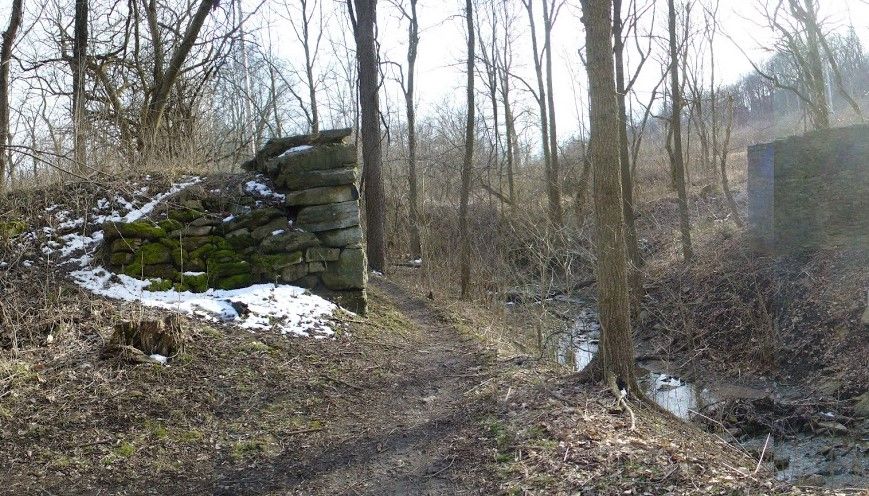The land where the North Park of Taylorsville MetroPark now sits was once the site of the bustling town of Tadmor, one of the most important centers of transportation in early Ohio history. With all four means of transportation of the day within yards of each other, Tadmor was truly the crossroads of America.
Tadmor was founded on land owned by the Sutherland family and became a transportation hub as it sat at important crossroads next to the Miami & Erie Canal. A large, water filled bridge called an aqueduct allowed canal boats to cross over the river and continue south. As the expansion west was underway covered wagons, men on horseback and people on foot pasted through the village of Tadmor following the National Road. The Miami-Erie Canal was the gateway for development. Canal boats carried people and goods helping the area grow and develop. The railroad brought new opportunities and development, increasing the range people could expand. The town had two train stations. One of them was on the Cincinnati, Hamilton, & Dayton Railroad and another on the Dayton & Michigan Railroad with a general store and a grain elevator. Roads improved and cars became the mode of transportation. The great age of automobiling was underway. Travelers now passed through this gateway to enjoy leisure time and to see the west traveling along US 40.
The post office went by the name Tadmer from 1867 – 1884, then Tadmor from 1884 – 1917. Most of the town’s residents already moved north to the National Road (US 40) a few years before The Great Flood of 1913, which destroyed almost everything that was left of Tadmor. It was completely abandoned by 1922.
The Miami-Erie canal remnants are still visible as you walk the path towards Tadmor. The National Road crosses the park on top of the dam. Five hundred feet north of the Taylorsville dam stands the foundation of an aqueduct. Travel though the Taylorsville area expanded the growth of Ohio as well as the nation.
